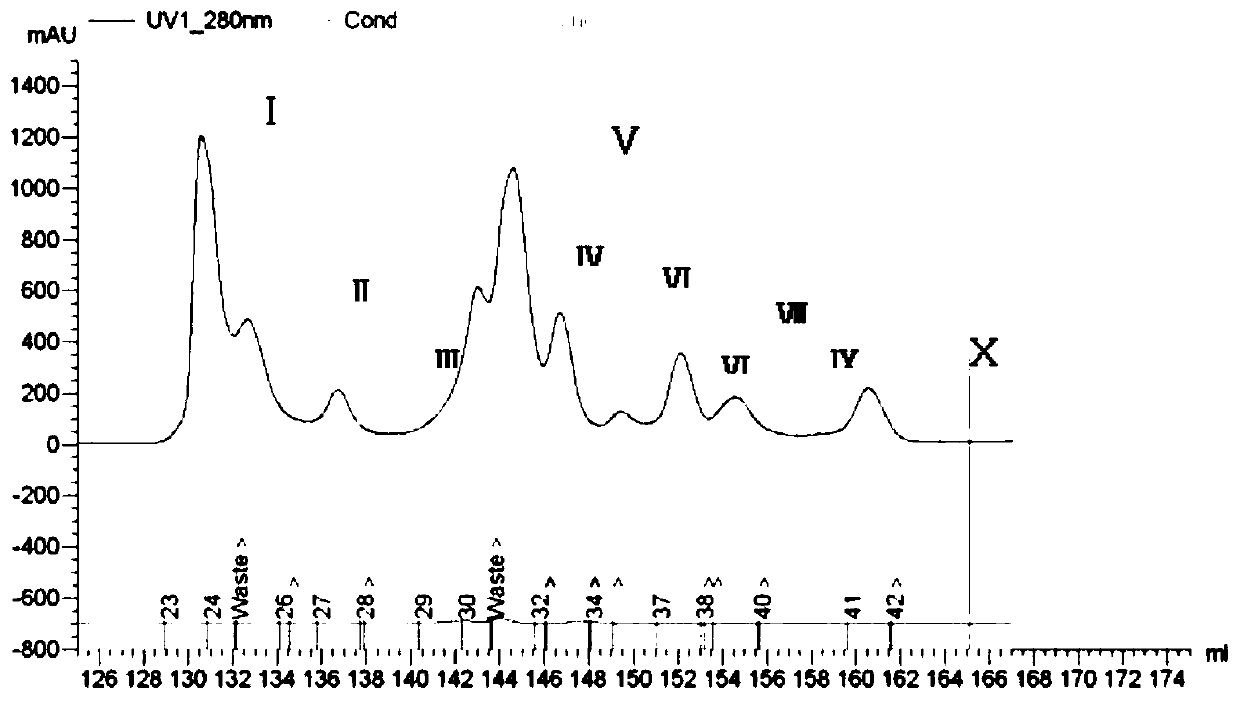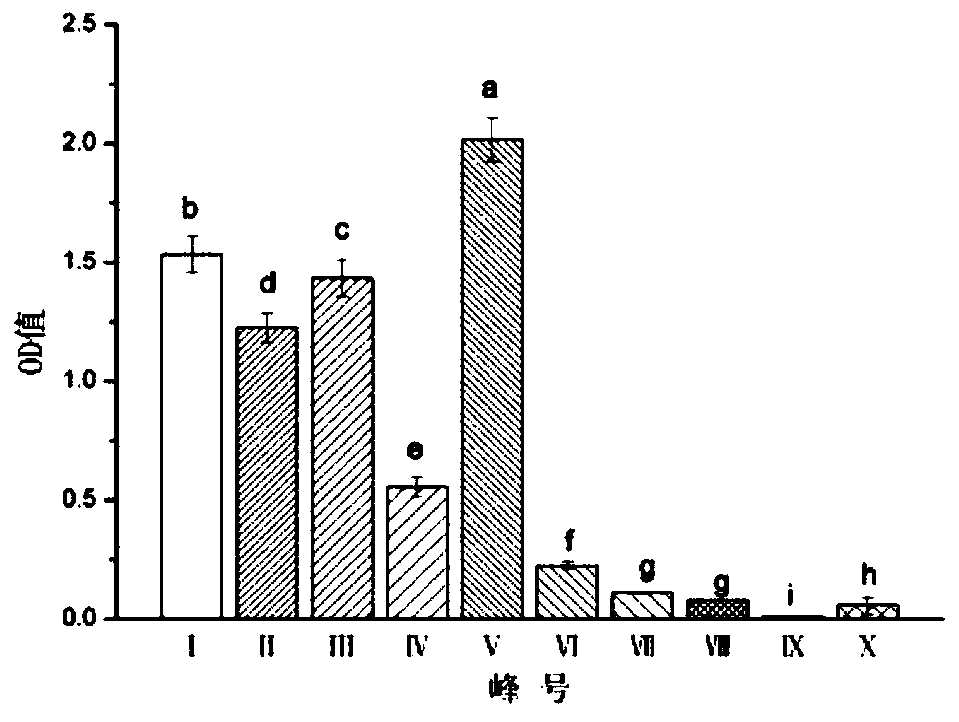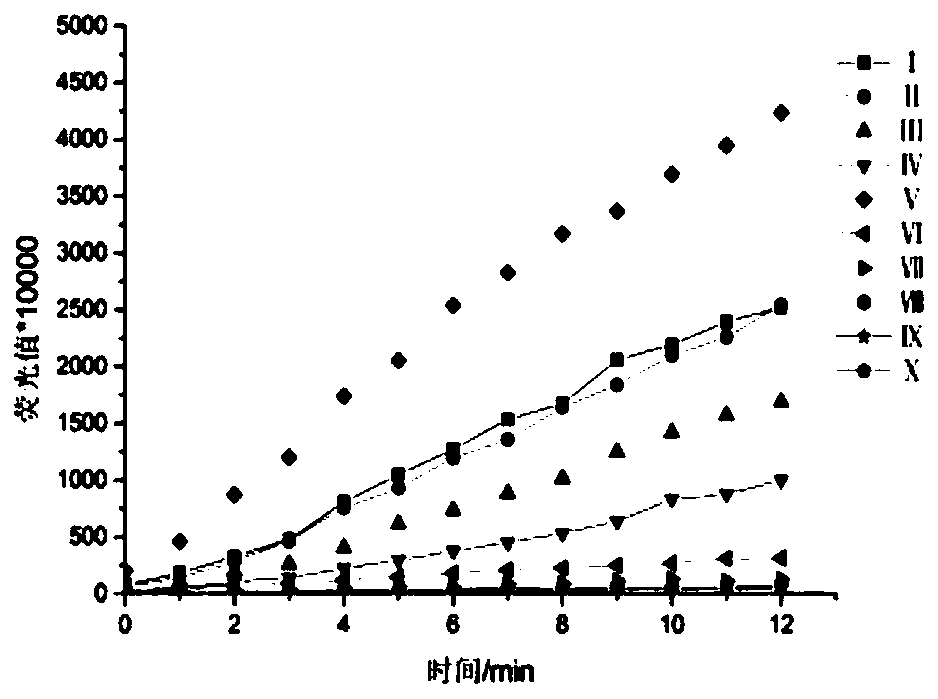Cowpea heme iron binding protein as well as preparation method and application thereof
A technology of heme iron and binding protein, which is applied in the field of pesticide residue detection, can solve the problems of single enzyme source and high extraction cost, and achieve the effect of wide source, large output and strong heat resistance
- Summary
- Abstract
- Description
- Claims
- Application Information
AI Technical Summary
Problems solved by technology
Method used
Image
Examples
preparation example Construction
[0032] The invention provides a method for preparing cowpea heme iron-binding protein, which comprises the following steps: (1) crushing cowpea and mixing it with a PB buffer solution, extracting by shaking, standing for 2 hours, and centrifuging to obtain a supernatant;
[0033] (2) Separating and purifying the supernatant through a gel chromatography column, using PB buffer as the mobile phase, the flow rate is set to 0.75mL / min, 1.5MPa is used as the maximum column pressure, and the wavelength of the ultraviolet detector is 280nm. Eluate under each absorption peak;
[0034] (3) Screen the part in the eluent whose specific enzyme activity is 3~5U / μg, enzyme activity>0.6U / mL, and binding ability Kd value<3.50μM to obtain cowpea heme iron binding protein.
[0035] In the present invention, cowpea is pulverized, mixed with PB buffer solution, extracted by constant temperature vibration, left standing for 2 hours, and centrifuged to obtain supernatant. In the present invention...
Embodiment 1
[0044] Extraction and Purification of Cowpea Heme Iron Binding Protein
[0045] Grind cowpea seeds into powder and sieve through a 100-mesh sieve, mix them with PB buffer at a material-to-liquid ratio of 1:25 (g:mL), shake and extract at a constant temperature (40°C) at 15 rpm for 30 minutes, then let stand at 4°C for 2 hours. Centrifuge at 4000rpm for 15min, and store the supernatant at 4°C. Using the protein purification system, select the Superdex-75 gel filtration chromatography column, use PB buffer (0.02mol / L, pH6.5) as the mobile phase, set the flow rate of the sample solution to 0.75mL / min, and set 1.5MPa as the maximum column Pressure value, UV detector wavelength is 280nm. The eluate under each peak was collected.
[0046] Separation and purification results of cowpea heme iron-binding protein
[0047] Separation and purification results of cowpea heme iron-binding protein by gel chromatography
[0048] Take the injection volume of the mobile phase as the absciss...
Embodiment 2
[0065] For sample extraction, weigh 10 g of homogenized and crushed mixed organophosphorus pesticide samples and mix them with 25 mL of acetone, vortex and oscillate for 10 min, then filter to remove impurities, dry the acetone with 35 ° C nitrogen, add phosphate buffer to set Capacity to 1000μL;
[0066] For sensitization treatment, add 300 μL of 0.05% calcium hypochlorite solution to 1000 μL of the sample extract, perform an oxidation reaction at 30°C for 15 minutes, then add 300 μL of a 10% sodium nitrite solution, and conduct a reduction reaction at 30°C for 15 minutes to obtain the test solution;
[0067] For enzyme inhibition detection, take 75 μL of the solution to be tested in the microtiter plate, and then add 50 μL of 50 μg / mL purified cowpea heme iron-binding protein working solution, mix evenly, and inhibit at a constant temperature of 35°C for 15 minutes, and mix with 100 μL of PB buffer ( 0.02mol / L, pH6.5), then add 50μL of reaction substrate indole acetate, mix ...
PUM
 Login to View More
Login to View More Abstract
Description
Claims
Application Information
 Login to View More
Login to View More - R&D Engineer
- R&D Manager
- IP Professional
- Industry Leading Data Capabilities
- Powerful AI technology
- Patent DNA Extraction
Browse by: Latest US Patents, China's latest patents, Technical Efficacy Thesaurus, Application Domain, Technology Topic, Popular Technical Reports.
© 2024 PatSnap. All rights reserved.Legal|Privacy policy|Modern Slavery Act Transparency Statement|Sitemap|About US| Contact US: help@patsnap.com










